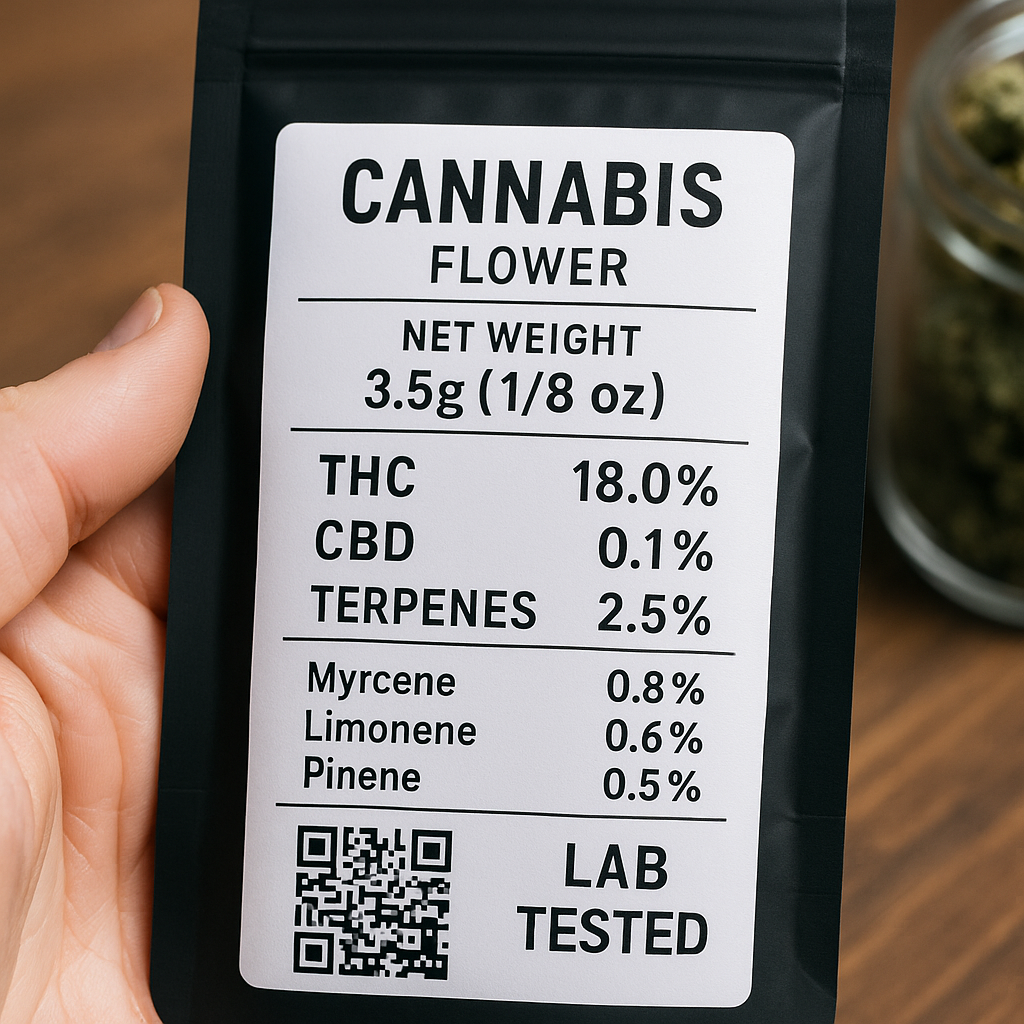Cannabis labels can be complex and, at times, confusing—even for seasoned consumers who may think they already know what to look for. As more states legalize cannabis and introduce new products, understanding label information has become critical to ensuring a safe and satisfying experience. The cannabis landscape is no longer limited to a few simple products. Now, there is a stunning array of flowers, extracts, edibles, and topicals, all with numerous ingredients, variable potencies, and nuanced effects. From potency to terpene content and from lab test results to strain names, the details displayed on packaging are intended to guide your purchasing decisions; however, not all labels provide the complete story. For those interested in exploring reputable market options that adhere to legal guidelines and prioritize consumer transparency, Zaleaf legal cannabis products offer a range of compliant choices tailored to different needs and preferences.
The increasing popularity of cannabis and inconsistent regional regulations have raised the need for more transparent labeling. Understanding what is in cannabis products is crucial for consumers seeking specific effects like pain relief or relaxation, as labels often present limited information, such as strain name or THC percentage. Variations in terpene content and minor cannabinoids can lead to different experiences even among products with the same THC levels. Therefore, knowing how to interpret labels accurately is essential for making informed and safer purchasing decisions in dispensaries or online.
In addition to state-compliant dispensaries, individuals interested in purchasing federally legal cannabis products can also access options online, provided by retailers that adhere to federal law and prioritize product quality through transparent labeling and trusted laboratory testing. These online markets open up access to products nationwide, but make it even more essential to understand what information on the label truly means, and how to spot products that meet high standards for safety and consistency.
Understanding THC and CBD Potency
THC (tetrahydrocannabinol) and CBD (cannabidiol) are the most recognized cannabinoids in cannabis, but they serve drastically different functions. THC is responsible for the plant’s euphoric “high,” producing effects like altered perception, appetite stimulation, and sometimes heightened anxiety if consumed excessively. CBD, on the contrary, is non-intoxicating and is often favored for its potential therapeutic properties, such as reducing anxiety, alleviating chronic pain, and helping regulate sleep cycles. On product labels, these cannabinoid concentrations are typically expressed as percentages of the product’s dry weight, which helps you compare potency between products. Thus, a label reading “THC: 18%” indicates a relatively strong psychoactive profile, while a lower number like “CBD: 10%” points to a potentially milder, wellness-focused product that may be more suitable for new users or those mindful of intoxication.
However, there’s reason to be cautious when trusting these numbers at face value. Multiple recent studies, including research conducted by the University of Colorado, have determined that nearly half of dispensary flower products are inaccurately labeled, with some overstating THC potency by more than 20%. This inconsistency can lead consumers to experience unexpected side effects, misjudge dosage, or build unrealistic expectations of the product’s effects. That’s why focusing on both THC and CBD content—and understanding that higher numbers aren’t always better—can help guide your selection of safe and effective products that match your needs.
The Role of Terpenes in Cannabis
Terpenes are naturally occurring aromatic compounds found in cannabis and many other plants, including fruits, herbs, and even trees. They are responsible for the signature scents—citrusy, earthy, piney, floral, or spicy—associated with various strains. But terpenes do more than make cannabis smell and taste unique; they may have profound implications for the user’s experience. Myrcene, the most common cannabis terpene, is thought to have sedative and anti-inflammatory effects, and it may enhance the permeation of cannabinoids across the blood-brain barrier. Limonene, commonly found in citrusy strains, may promote an uplifted mood and help alleviate stress. Pinene provides a refreshing pine aroma and, according to some research, may encourage mental clarity and alertness while counteracting the short-term memory loss sometimes associated with THC. Other terpenes, such as linalool (floral, calming), caryophyllene (peppery, anti-inflammatory), and humulene (hoppy, appetite-suppressing), contribute further to the spectrum of effects.
While a full terpene profile is not always disclosed on every cannabis product, some producers are beginning to include this valuable information, enabling consumers to make more nuanced purchasing decisions. When labels display major terpene percentages alongside cannabinoids, you gain unique insight into the complexity of each product and can begin to predict effects more accurately. Understanding terpenes can be instrumental in predicting how a product will feel, offering subtleties that go far beyond just THC or CBD numbers. Interested readers can learn more about the “entourage effect,” which describes how terpenes and minor cannabinoids work together to shape the user experience, as well as explore expanded terpene science from educational authorities such as Healthline: What Are Terpenes and What Do They Do?
Debunking Indica and Sativa Myths
The cannabis world often groups products as indica, sativa, or hybrid, promising sedative, energizing, or balanced effects, respectively. This classification, however, is largely based on folklore and plant appearance rather than chemical content. A sweeping study analyzing nearly 90,000 cannabis samples highlights that these categories rarely align with the actual chemical profiles of the products. The reality: two products labeled as “sativa” could have radically different effects, and “indica” may not always be the relaxing nightcap promised by traditional narratives. These categories originated from botanical distinctions—indica plants tend to be short and bushy with broad leaves, while sativa plants are tall and slender—but they do not predict the effect of the flower itself.
Instead of fixating on the strain type, focusing on the cannabinoid and terpene makeup provides a more reliable basis for effect predictions. For example, a product rich in myrcene (regardless of whether it is labeled as indica or sativa) may be calming, while one high in limonene or pinene might be uplifting or focus-promoting. Consumers should view traditional strain labels as broad marketing categories rather than as accurate predictors of how a product might affect them. This science-backed approach can guide more satisfying and personalized consumption compared to depending on outdated folk wisdom.
Accuracy of Cannabis Labels
The need for accurate, transparent cannabis labeling has become pressing as scientific scrutiny uncovers rampant mislabeling in the industry. Studies in Colorado and California have shown that about 44% of cannabis flower products do not accurately reflect the THC content listed on their labels, with most tending to overstate potency. Consumers unknowingly purchasing products with falsely high THC can experience stronger effects than anticipated, which is particularly concerning for first-timers or those using cannabis for medical reasons. These errors could stem from inconsistent testing methods, a lack of regulatory oversight, or intentional inflation by producers to attract customers. Meanwhile, cannabis concentrates—like vape oils and dabs—have fared much better in accuracy, with up to 96% showing reliable THC measurements, likely due to stricter regulations and easier sample homogenization.
The disparity highlights an urgent need for regulatory standardization and regular third-party lab testing, which is not always mandated or followed rigorously. As a consumer, you should always look for products that include proof of lab analysis, often referred to as a Certificate of Analysis, and exercise caution if a product lacks verifiable lab results. These certificates are typically available through QR codes on the package or on the company’s website, allowing you to match batch numbers with test results for contaminants, pesticides, mold, and cannabinoid content.
Tips for Interpreting Cannabis Labels
- Look Beyond THC Percentage: A high THC percentage doesn’t guarantee a more enjoyable or potent experience. Consider the full profile, including CBD and the listed terpenes, to anticipate both effects and potential side effects.
- Seek Terpene Information: Products that highlight a terpene profile give you more insight into likely effects than relying solely on cannabinoids or strain type.
- Check for Lab Testing: Always ask to see a Certificate of Analysis. Reputable products should have documentation from a trusted laboratory, preferably accessible via a QR code or online link.
- Question Strain Names: Use strain names (like “OG Kush” or “Sour Diesel”) as general guides only; don’t assume they promise consistent effects, even from batch to batch.
- Consult Knowledgeable Experts: Rely on experienced dispensary staff or large, evidence-based sources before making a final decision. Many budtenders have additional training to help guide you, and reputable online retailers often provide customer service to explain product details.
Conclusion
Decoding cannabis labels requires a healthy dose of skepticism and a willingness to look beyond marketing claims or popular myths. By emphasizing products with transparent, lab-verified cannabinoid and terpene profiles, you prioritize your safety and satisfaction. Seek out vendors committed to honest and thorough labeling, and remember that the best decisions are made by those who take the time to learn about the details behind the names and numbers. As both consumer knowledge and regulatory oversight increase, clearer labeling practices will foster safer and more satisfying cannabis experiences for everyone, regardless of the type of product you choose to explore.










